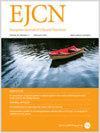Reduced rank regression dietary patterns and dyslipidemia in Brazilian adolescents: results from the Study of Cardiovascular Risk in Adolescents (ERICA)
IF 3.6
3区 医学
Q2 NUTRITION & DIETETICS
引用次数: 0
Abstract
Evidence on the harmful effects of diet on serum lipids in adolescence has not been consistent. The present study sought to establish which dietary patterns are associated with biomarkers of dyslipidemia. Data from 36,217 Brazilian adolescents participating in the Study of Cardiovascular Risk in Adolescents were evaluated. Dietary patterns were identified using the reduced rank regression analysis. Linear regression models were applied to verify the association between dietary pattern scores and the biomarkers of dyslipidemia. The two first dietary patterns identified by reduced rank regression (RRR-DP1 and RRR-DP2) were kept for further analysis. The RRR-DP1 was highly and positively loaded for sweets and red meat and negatively loaded for beans, fruits, vegetables, and rice. The RRR-DP2 was positively loaded for beans and rice and negatively loaded for sugar-sweetened beverages, fruit juices, and sweets. Linear regression models estimated that one standard deviation (SD) increase in the RRR-DP1 score was only associated with a mean increase of 0.29 mg/dL in HDL-cholesterol (95% CI 0.06;0.53), while one SD increase in the RRR-DP2 score was associated with the lower mean of triglycerides (β = −2.24, 95% CI −3.57;−0.91), LDL-c (β = −0.82 95% CI −1.53;−0.12), and total cholesterol (β = −1.30 95% CI −1.94;−0.65). Higher adherence to the dietary patterns positively loaded for red meat and sweets was associated with increased HDL-c levels, while adherence to a more Brazilian traditional dietary pattern (RRR-DP2) was associated with a better lipids profile.

巴西青少年的降级回归饮食模式和血脂异常:青少年心血管风险研究(ERICA)的结果。
背景:有关饮食对青少年血清脂质有害影响的证据并不一致。本研究旨在确定哪些饮食模式与血脂异常的生物标志物有关:评估了参与青少年心血管风险研究的 36,217 名巴西青少年的数据。采用还原秩回归分析法确定了饮食模式。应用线性回归模型来验证膳食模式得分与血脂异常生物标志物之间的关联:结果:通过秩回归分析首先确定的两种膳食模式(RRR-DP1 和 RRR-DP2)被保留下来作进一步分析。RRR-DP1 在甜食和红肉方面具有高度正负荷,在豆类、水果、蔬菜和大米方面具有负负荷。RRR-DP2 与豆类和米饭呈正相关,与含糖饮料、果汁和甜食呈负相关。线性回归模型估计,RRR-DP1 分数每增加一个标准差(SD),高密度脂蛋白胆固醇平均只增加 0.29 毫克/分升(95% CI 0.06;0.53)。53),而 RRR-DP2 分数每增加一个 SD,甘油三酯(β = -2.24,95% CI -3.57;-0.91)、低密度脂蛋白胆固醇(β = -0.82 95% CI -1.53; -0.12)和总胆固醇(β = -1.30 95% CI -1.94; -0.65)的平均值就会降低:结论:多吃红肉和甜食的膳食模式与高密度脂蛋白胆固醇水平升高有关,而多吃巴西传统膳食模式(RRR-DP2)与血脂状况改善有关。
本文章由计算机程序翻译,如有差异,请以英文原文为准。
求助全文
约1分钟内获得全文
求助全文
来源期刊
CiteScore
10.60
自引率
2.10%
发文量
189
审稿时长
3-6 weeks
期刊介绍:
The European Journal of Clinical Nutrition (EJCN) is an international, peer-reviewed journal covering all aspects of human and clinical nutrition. The journal welcomes original research, reviews, case reports and brief communications based on clinical, metabolic and epidemiological studies that describe methodologies, mechanisms, associations and benefits of nutritional interventions for clinical disease and health promotion.
Topics of interest include but are not limited to:
Nutrition and Health (including climate and ecological aspects)
Metabolism & Metabolomics
Genomics and personalized strategies in nutrition
Nutrition during the early life cycle
Health issues and nutrition in the elderly
Phenotyping in clinical nutrition
Nutrition in acute and chronic diseases
The double burden of ''malnutrition'': Under-nutrition and Obesity
Prevention of Non Communicable Diseases (NCD)

 求助内容:
求助内容: 应助结果提醒方式:
应助结果提醒方式:


